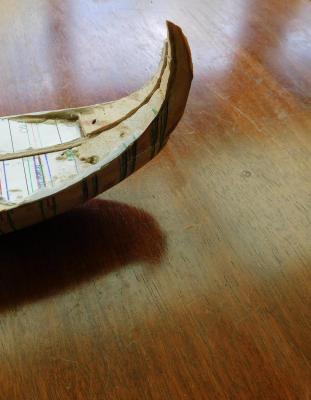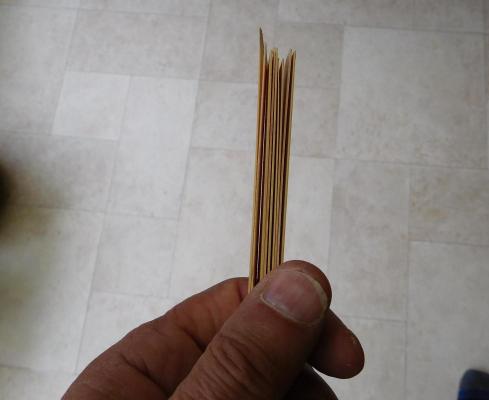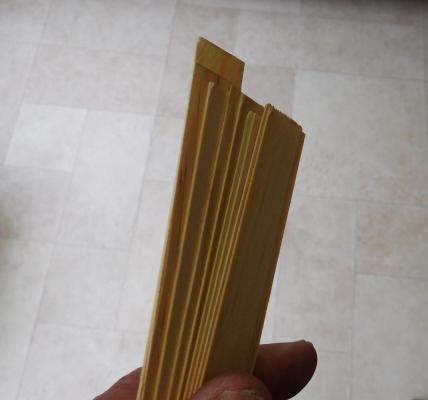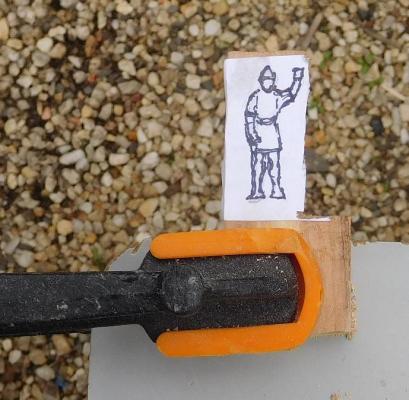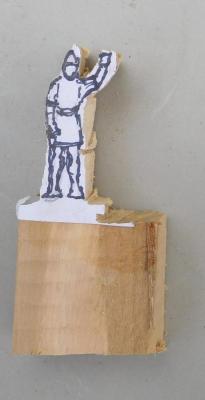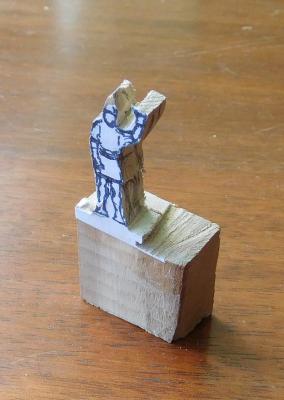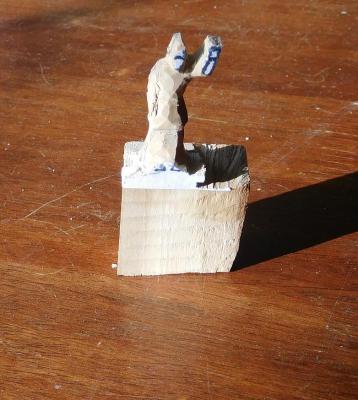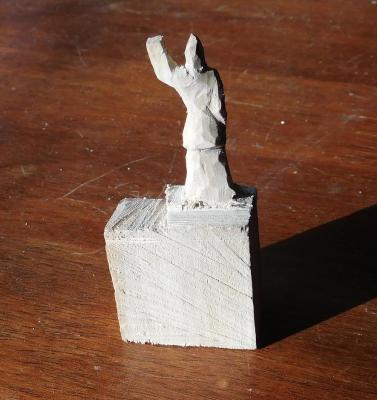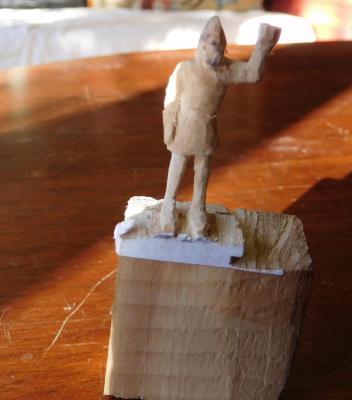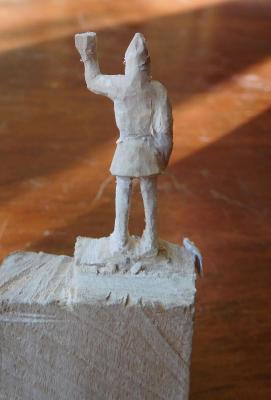-
Posts
7,987 -
Joined
-
Last visited
Content Type
Profiles
Forums
Gallery
Events
Everything posted by Louie da fly
-

2 recent discoveries of ancient ship-wrecks
Louie da fly replied to Landrotten Highlander's topic in Nautical/Naval History
Zeh, I'd like to send you the link to the discussion about the Mary Rose but I don't have access to a computer - only my phone. But if you do a search on Msry Rose forecastle on MSW you'll find it and links to some more sites with portolans. By the way if you want to see the Calicut Tapestry (and I can recommend it) do a google image search for Vasco da Gama tapestry and you should be able to find it. Apparently there were a series of tapestries made to commemorate the voyage. I think only one of them shows the ships. By the way, am I right in thinking Vasco means Basque? If so, maybe it wad a nickname - 'the Basque guy'. The reason I'm interested is that fir some reason the Basques seem to have been at the cutting edge of ship design at the time - they seem to crop up everywhere. And it was a very exciting time. In few short decades they progressed from simply rigged single masted, relatively small ships to (relatively) huge complex 3 and 4 masters capable of travelling anywhere. I've got huge respect for the shipwrights of the time. They were true pioneers,equally worthy of respect with the great artists and architects who were their contemporaries. Speaking of caravels, a guy here in Australia, about an hours drive from where I live, has built a reconstruction of a caravel and sails it around. There's a legend here that a wreck found in the sands 150 or so years ago and then reburied by the sand was from a Portuguese expedition which got as far as Warrnambool on our south coast in the early 16th century and mapped it but turned back aftet one of the ships was wrecked. People have been searching for this wreck, the so-called Mahogany Ship, even as recently as a couple of years ago with echo-locators, but with no success. Fascinating- it'd be great if they found it - but if it turned out to be something ordinary and boring we'd have lost one of our local legends. So I don't know if I really want it to be found . . . Steven -
Well, only 87 oars to go, and I've started on the frames. There is quite a sharp corner at the futtock and I kept breaking the frames trying to bend them around it. I finally tried boiling a frame in water for half an hour then left it in the water for another two and a half hours and it worked beautifully. Then I discovered I could get the same result soaking in cold water for 3 hours. So I'm on my way. I clamped the frame to the groove I'd cut in the plug overnight and it came out beautifully. Now to cut another 18 or so to put on the plug and plank over. The current plan is to put the other 106 frames in after the planking is finished. Oh, and I think I've worked out how to make the oarsmen without having to carve 50 of them individually. No photos at the moment I'm afraid. Steven
-
In 'Hornblower and the Atropos' C.S. Forester describes (probably not from personal experience, though may have gone and looked at them in the museum) being in charge of one of these barges as part if Nelson's funeral procession. From his description I got the impression they were considerably bigger and heavier - but the barge in question WAS loaded up with The Body in its heavy coffin. However accurate, it nakes a good read.
- 641 replies
-
- greenwich hospital
- barge
-
(and 1 more)
Tagged with:
-

2 recent discoveries of ancient ship-wrecks
Louie da fly replied to Landrotten Highlander's topic in Nautical/Naval History
Yes I know the Miller Atlas. I think it's fantastic. The old portolans often have surprisingly good pictures of ships, particularly from about 1500 to 1580. Some months ago I did a google image search under portolan/portulan/portulano etc and came with a treasure trove of pictures. Not terribly good on detail but very enlightening on the general shape and form of ships of the time. I put a few up on a discussion about the Mary Rose's forecastle, if you're interested. Best wishes, Steven -

2 recent discoveries of ancient ship-wrecks
Louie da fly replied to Landrotten Highlander's topic in Nautical/Naval History
Yes that's a very interesting resource and I got all excited when I found it. I was very disappointed when I discovered it was produced decades after the event. Even the Calicut Tapestry isn't fully representative of Vasco da Gama's ships. Though it was made a very short time after the events, it was produced in Flanders, not Portugal. And the artist probably used a Flemish ship as his model, not a Portuguese one. From looking at a lot of carrack pictures, they were all quite similar, but there were definite regional differences. Still all we can do is make a 'best guess' with what information we do have and try to get as close as we can to how the real ships were. We all have lots to learn. But that's what makes it fun. Steven -
Thanks, Vivian. It's been a long time getting around to starting, and progress is a little slow. But I'm enjoying it. Steven
-

2 recent discoveries of ancient ship-wrecks
Louie da fly replied to Landrotten Highlander's topic in Nautical/Naval History
Yes, I find that whole period of ship design fascinating. And certainly naus did develop into the kind of ship you linked to. That's more of a galleon shape - with a beakhead and without the gigantic forecastle and sterncastle that would have made late "super-carracks" like the Mary Rose so unwieldy. Steven -

2 recent discoveries of ancient ship-wrecks
Louie da fly replied to Landrotten Highlander's topic in Nautical/Naval History
Actually only 23 years, and we don't know how old the Esmerelda was when she sank. The Flor de la Mar is dated to 1511 but I believe the picture to have been produced some decades later. Pictures of which the date is known, such as the Calicut Tapestry of 1504 (of Vasco da Gama's voyage to India) and Jacopo de Barbari's picture of Venice of 1500 still show the classic carrack shape. By the time of the Santa Caterina do Monto Sinai of 1520 ships were getting bigger and more sophisticated, but a nau wrecked in 1503 will have looked very like the ships mentioned above. -

2 recent discoveries of ancient ship-wrecks
Louie da fly replied to Landrotten Highlander's topic in Nautical/Naval History
Can't shed much further light on these particular vessels, but the Esmerelda in particular is a very exciting find. She'd be very similar to the Nave Tonda that Woodrat is currently building on the scratch build forum. There's also info on this type of ship in the "Important links to ship modelling resources" section under the heading "Archaeological studies on carrack wrecks" and also "The Cavalaire Wreck - Basque Carrack of c.1479", (which being from the Iberian peninsula would have had a lot in common with the Esmerelda). It's a shame so little of the vessel itself has been recovered. But it eoul be good to learn more of the artefacts they've found. Steven -
That's true. But I find it much more interesting researching and scratch building older ships, where the information is almost always incomplete and where imagination and educated guesswork have to take the place of hard data, than to work from a set of complete plans where everything is known and set down. As far as I'm concerned the research and speculation is a major part of the enjoyment, even if it means not ever really knowing if you got it right, even if what you build may be outdated by later discoveries. It's true - it's all about the journey. I know many others prefer to have the certainty and the plans all laid down properly, but for me the fun is just as much about the detective work as it us about the build itself. To me the two are complementary and both contribute ewually to the enjoyment of the build.
-
Well that's good, then. I didn,t want to be the person who tells you stuff that makes you throw away something you've just spent lots of time and effort making because it turns out to be wrong. As far as I can see, the differences were only in detail, not in kind. I wasn't aware they had the Red Bay capstan, but I'm not really surprised seeing how complete the wreck is. Steven
-
The link is in "important links to ship modelling resources" under "archaeological studies on carrack wrecks". Follow the links and you should be able to find drawings of the capstan as it was found and another reconstructing it as it would have been in the day. I just wish I'd been able to refer you to it before you made your own capstan. Lots of other good stuff there as well, including a port lid and (I think)cannons, pump, rudder . . .
-
Thanks, Druxey. I thought it was probably something like that. Steven
- 641 replies
-
- greenwich hospital
- barge
-
(and 1 more)
Tagged with:
-
I checked the Lomellina wreck. It does have a capstan, but very similar to what you've done. Cross section a bit different and tapers upwards. But this was a Genoese vessel, not Venetian, and as I understand it they didn't share shipbuildung secrets - they were often enemies and always rivals. I'm using my phone so can't post pics but I can probably search up the website later today if you're interested. Steven
-
Beautiful work, as always. Just a quick question from far earlier in the build. What's the purpose of the gesso on the plug? I can understand the beeswax, to stop adherance, but what is the gesso for?
- 641 replies
-
- greenwich hospital
- barge
-
(and 1 more)
Tagged with:
-
Very nice, Dick. It looks very business like. I have a feeling one of the wrecks - perhaps the Lomellina? - still had its capstan, but I could be wrong about that. Anyway, a lovely piece of work as usual. Steven
-
Thanks everyone for all the 'likes'. I probably won't be posting again for awhile - life gets in the way, and I won't be able to get to a computer. But I should be making more progress on the build.
-
Latest progress. I've glued the plug together and slightly widened the gap between the sides so the stempost and sternpost can come out more easily when I remove them. I've added a bit of builder's filler to adjust the shape of the upper works at the stern so the sheer is a smoother curve at the tail, and drawn transverse lines for the frames either side of the oarports, so I don't have to cut a frame to put an oarport in. I should be able to get away with 21 frames at this stage - out of a total of 127. The rest will be added after the planking is finished. I've cut timber to 1/2 millimetre for the pine planks. I used a dropsaw - not perhaps the most elegant method, and there was a fair bit of wastage with planks that came out too thick, but I'm pretty happy with the result. And I've carved my first crewman out of pear wood. Not quite finished, but well on the way. Still needs a lot of smoothing off to get rid of the blade marks. I'm not totally happy with him - I might not end up using him, as his face leaves a bit to be desired. He's intended to be standing on the deck holding onto a shroud. The hand isn't finished yet, and might not be till I'm able to put him in position on the deck. Still, rather fun after carving a bunch of oars all the same. Ten done now - only 90 to go!
-
Dick, I'd suggest you go for it - write your article and send it to Mariner's Mirror. I've found that even academics are more interested in the addition to the fund of knowledge than in the letters after a person's name. I've been thinking of writing one on my dromon when it's finished. You might have to get a bit of coaching in how to present the paper, and how to add references, bibliography etc., but you can pick a lot of that up by reading academic papers, like some of the TAMU ones you've already looked at. You've made some very worthwhile and valuable discoveries during your build and lack of academic qualifications is no reason not to share the results of your research. I believe it would stir up a lot of interest. You might like to contact Glenn, who's currently building a paddle wheeler on this forum. He's at TAMU and might be able to help out. Steven
-
Ben, if you want a stable, flat-bottomed ship that nonetheless resembles a Viking ship as you mentioned earlier, you might like to look at the rather graceful Mediterranean ship which sank about 1025 at serce limani off the coast of what is now Turkey - you can see a 3D image here and its lines here
-
Lovely work, Druxey. You inspire us all. Steven
- 641 replies
-
- greenwich hospital
- barge
-
(and 1 more)
Tagged with:
-
Lovely work, Dick. You continue to amaze with the quality and beauty of this build. Steven
-
Thanks, Carl. Yes, there are videos of working biremes both on youtube and here on MSW. Way out of my league, I'm afraid. I'll stick with what I know and stay with a static model - radio control is a whole other subject that I have no idea about, though my hat goes off to those who master it. Steven
-
Nice pictures, Tadeusz. These really are lovely-looking ships. Steve, just a point of interest - the rigging on these ships is mainly based upon educated guesswork. No cordage has survived, as far as I'm aware, on any Viking ship found so far (though they have found various things which appear to work as deadeyes and other artefacts which seem to belong with the rigging, and there are also a few rather interesting representations of rigging - though far too vague to be terribly helpful - on Viking runestones). However, these replicas have sailed long distances under all sorts of conditions and have had time to work out any bugs in the rigging. It may not be exactly as the Vikings used, but it certainly works as it is, and we'll probably never know any better. Steven
About us
Modelshipworld - Advancing Ship Modeling through Research
SSL Secured
Your security is important for us so this Website is SSL-Secured
NRG Mailing Address
Nautical Research Guild
237 South Lincoln Street
Westmont IL, 60559-1917
Model Ship World ® and the MSW logo are Registered Trademarks, and belong to the Nautical Research Guild (United States Patent and Trademark Office: No. 6,929,264 & No. 6,929,274, registered Dec. 20, 2022)
Helpful Links
About the NRG
If you enjoy building ship models that are historically accurate as well as beautiful, then The Nautical Research Guild (NRG) is just right for you.
The Guild is a non-profit educational organization whose mission is to “Advance Ship Modeling Through Research”. We provide support to our members in their efforts to raise the quality of their model ships.
The Nautical Research Guild has published our world-renowned quarterly magazine, The Nautical Research Journal, since 1955. The pages of the Journal are full of articles by accomplished ship modelers who show you how they create those exquisite details on their models, and by maritime historians who show you the correct details to build. The Journal is available in both print and digital editions. Go to the NRG web site (www.thenrg.org) to download a complimentary digital copy of the Journal. The NRG also publishes plan sets, books and compilations of back issues of the Journal and the former Ships in Scale and Model Ship Builder magazines.




